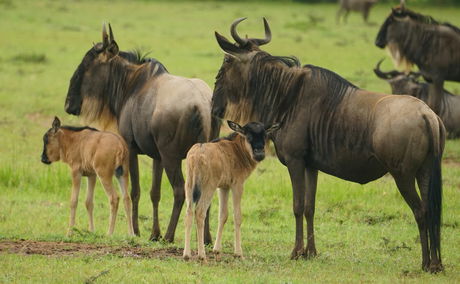Travel Deeper: How Cultural Respect Creates Truly Sustainable Tourism 1) True sustainability goes beyond eco‑habits—it begins with a respectful mindset toward local cultures. 2) Cultural respect strengthens the three pillars of tourism: environmental protection, economic resilience, and socio‑cultural preservation. 3) Empowering communities as guardians, artisans, and storytellers ensures conservation and dignified livelihoods. 4) Travel becomes legacy‑building when it shifts from extraction to authentic human connection.
Male Lion’s Mane: Strength, Survival and Natural Majesty
The male lion's mane is more than just a striking feature—it plays a vital role in survival, signaling strength, dominance, and genetic fitness. It serves as protection during territorial fights, attracting lionesses with its fullness and darkness. In hotter climates, lions adapt by having shorter or no manes to regulate body temperature. Testosterone influences mane growth and color, with rare cases of maned lionesses due to hormonal imbalances. Observing these majestic creatures in the wild offers deeper insights into their behavior, making a safari an unforgettable experience.
Introduction
What’s the first image that comes to mind when you think of a lion? For most, it’s the majestic male lion’s mane—a striking symbol of strength, dominance, and beauty. But have you ever wondered why the King of the Jungle wears this remarkable "crown"? The story behind the mane is as captivating as the lions themselves, and it reveals fascinating insights into their behavior, biology, and survival. Let’s delve deeper into this natural wonder and uncover why it’s more than just a good hair day for lions.
Protection: The Mane as a Warrior’s Shield
Male lions don’t get to be kings without a fight—literally. Territorial disputes and battles for pride dominance often lead to fierce confrontations between males. The mane serves a critical purpose here, acting as a natural shield to protect the lion's neck and head from bites or injuries during these encounters. Its thickness and volume can mean the difference between victory and defeat.
When on safari with #Kijani Tours, you will often see lions in their natural habitat, perhaps even witnessing their social dynamics. Imagine learning firsthand how the mane plays a role in their survival—it is a real-life drama you don’t want to miss.
Attraction: A Mane That Turns Heads
Did you know the fullness and darkness of a male lion's mane can determine his success in winning over a lioness? The mane is a signal of strength, virility, and overall fitness. Lionesses instinctively gravitate toward males with darker, fuller manes, as it suggests superior genetics and health—a crucial factor for their cubs’ survival.
Next time you are exploring the Serengeti, pay attention to the pride leaders. Their majestic manes aren’t just for looks—they are badges of honor earned through nature’s selection process.
Climate Adaptation: Nature’s Ingenious Adjustments
Here’s where nature gets even more fascinating. Lions living in hotter regions, like Tsavo in Kenya, often have shorter or even no manes. Why? Thick manes can lead to overheating, so lions in these climates adapt with less hair to help regulate their body temperature. This adaptation ensures their survival in extreme environments.
For travelers with spotting a maneless lion is a rare and exciting experience. It’s a glimpse into how wildlife evolves to thrive in diverse ecosystems.
Testosterone Influence: The Science Behind the Mane
The growth and color of a lion’s mane are directly linked to testosterone levels. Higher testosterone not only makes the mane darker and fuller but also boosts the lion’s dominance in its pride. On the flip side, castrated lions lose their manes due to reduced hormone production—a fascinating insight into the relationship between biology and behavior.
Even more intriguing, some female lions develop manes due to hormonal imbalances. These rare "maned lionesses" are a marvel to observe and add yet another layer to the complexity of lion biology.
Takeaway Message: Witness the Majesty for Yourself
Every strand of a lion’s mane tells a story—a tale of strength, survival, and the intricate balance of nature. But these stories are best experienced up close, in the heart of the wild.
Don’t miss your chance to witness these majestic creatures with Kijani Tours. Whether it is exploring the Serengeti, spotting maneless lions in Tsavo, or learning about lion behavior from expert guides, your adventure awaits. Book your eco-friendly safari today and let the King of the Jungle leave you in awe.
Expand Your World with Kijani Tours: Where Adventure Meets Purpose
This blog explores the breathtaking drama of the wildebeest calving season in Tanzania’s southern Serengeti, where over 500,000 calves are born within a few short weeks between January and March. It highlights the synchronized birthing strategy known as predator satiation, which helps ensure survival by overwhelming predators, such as lions, cheetahs, and hyenas, with sheer numbers. The piece captures the emotional intensity of this natural phenomenon—where life and death unfold in real...
The article depicts climbing Mount Kilimanjaro as a journey of personal growth, emphasizing inner transformation, resilience, and empowerment rather than mere physical achievement, highlighting profound connections and lasting change through struggle and triumph.



Share This Post